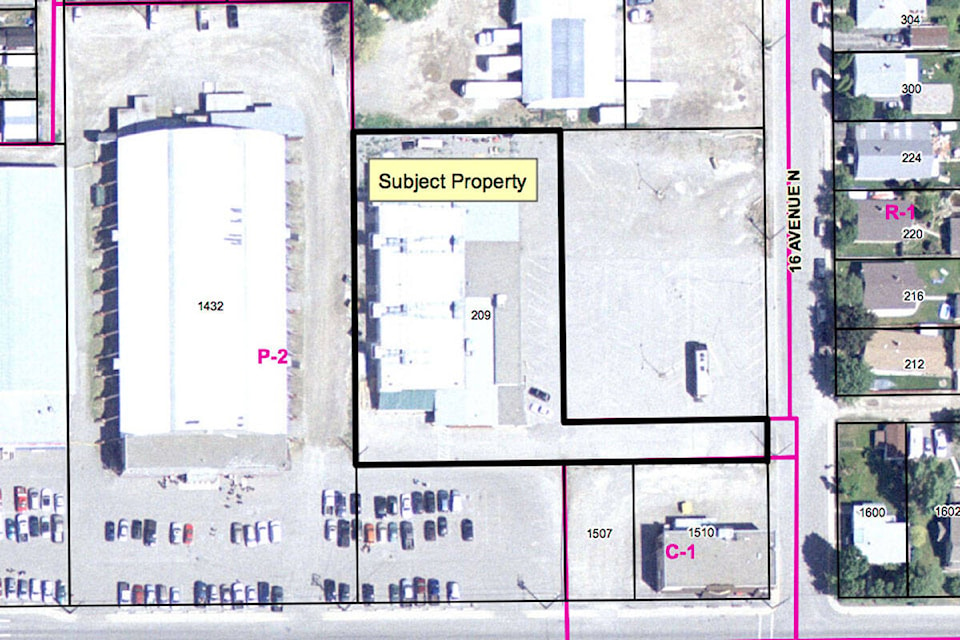It has been over one year since city council passed a rezoning application to allow homeless shelter operations that will be run out of a building managed by Community Connections Society of Southeast B.C.
However, there still isn’t a firm timeline for opening shelter operations at 209 16th Ave. N, according to a statement from BC Housing.
“We understand the community is eager for the new shelter on 16th Ave to open, which will provide a new space for people currently staying at the temporary shelter at the Travelodge,” reads the statement. “We are currently reviewing contractor bids for the renovations required at the site. We will provide an update when more information is available.”
Following a series of town halls with local officials and advocates to identify challenges and discuss solutions for the city’s vulnerable population, Cranbrook city council and the province are seeking a meeting to talk about potential for future action, funding and projects.
B.C. Attorney General David Eby, also the minister responsible for housing, teased that there are “current and upcoming opportunities” for Cranbrook to work with the province and partners to take action, in recent correspondence with the city.
READ: BC Attorney General, Cranbrook city council seek meeting on homeless supports, crime
BC Housing says it continues to look for additional housing options in partnership with the city and other local stakeholders.
“We understand that businesses and stakeholders in Cranbrook are concerned about the impact homelessness is having on their community, and we want to work together with the City on these issues,” according to BC Housing’s statement.
“…We also know that Cranbrook’s marginalized population faces many challenges, which is why we partner with organizations that offer mental and physical health supports, warm meals for shelter guests, and staff who can support those wishing to move on to more permanent housing.”
In the 2022 BC Budget, the province unveiled $633 million in funding for initiatives aimed at reducing homelessness. That was further broken down during a press conference last week, with specific announcements that included $35 million for new and increased supports for young people in government care and $600-per-month rent supplements and integrated supports for more than 3,000 people with low incomes.
Additional funding included $164 million to expand complex-care housing, and $264 million for a permanent housing plan to ensure those where were temporarily housed during the pandemic don’t return to homelessness.
Last week, the province also unveiled a new system of quantifying homelessness in B.C. by analyzing data from provincial employment assistance, shelter and health programs. The Preventing and Reducing Homelessness Integrated Data Project created a report that used anonymized data from 2019 to get reliable information about people experiencing homelessness.
Provincially, the report identified 23,000 individuals experienced homelessness over 2019, while 9,300 individuals experience homelessness on average in any given month. Of the yearly total, 48 per cent of individuals experienced chronic homelessness, defined as six months or more, according to Eby.
“The particularly compelling data, I think though from this report is around the per-capita homeless figures, where you see, instead of the concentration being in larger urban areas, on a per-capita basis, the largest homeless populations were in remote and rural communities, northern communities, disproportionately,” Eby said, during a press conference on March 16.
Given that the information from that report is three years old, Eby noted that the province has already started work on anonymizing the 2020 data set and will be conducting annual reports to better identify trends.
“I’m really excited about the potential of this, to provide us, in much closer to real time, information about the impacts that our programs are having on homelessness for different groups,” Eby said. “…What we’re going to be able to see going forward more rapidly, is more accurate inforamtion which will really help guide and hone our homelessness strategy.”
Previously, the province utilized point-in-time counts to quantify homelessness in communities, which can have data limitations, as it only provides a snapshot in time and can lack additional context.
Cranbrook was one of three communities that had an extended point-in-time count over a four-day period, rather than the typical 24-hour window, in March 2020. That count noted a total of 63 individuals identified as homeless, 28 who were sheltered and 35 who were unsheltered. It was an 117 per cent increase from 2018, which surveyed a total of 28 individuals in the first point-in-time count.
trevor.crawley@cranbrooktownsman.com
Like us on Facebook and follow us on Twitter
Want to support local journalism during the pandemic? Make a donation here.
